Abstract
Individual performances of three rats were examined under a procedure in which steady rates of bar pressing were maintained by conditioned aversive stimulation. Originally neutral visual and auditory stimuli were accompanied by widely and irregularly spaced pulses of shock; they were terminated on a variable-interval schedule by pressing a bar. The contingencies between behavior and shock were also duplicated in a control procedure in which no visual or auditory stimuli were provided. Pressing observed under the control procedure was attributed to differences in the aversiveness of pressing and nonpressing behavior engendered by differences in the incidence of shock following the two classes of behavior. Increased rates with visual and auditory stimuli were attributed to termination of conditioned aversive stimulation. Control rates declined more rapidly than did experimental rates as the mean interval between successive shocks was lengthened; both rates tended to decline when less than 60 sec was allowed as time out from shocks following the successful response. In the control procedure, discrimination between the continuation and discontinuation of the shock series, as measured by relative rates, depended on the relative length of the interval between shocks and the time-out period. Regular warm-up accelerations in rate were noted following an initial delay in responding at the beginning of each session. The length of time required for the warm-up depended on the length of the mean interval between shocks, indicating that exposure to a certain amount of shock was required to establish a supporting state for the observed performance.
Full text
PDF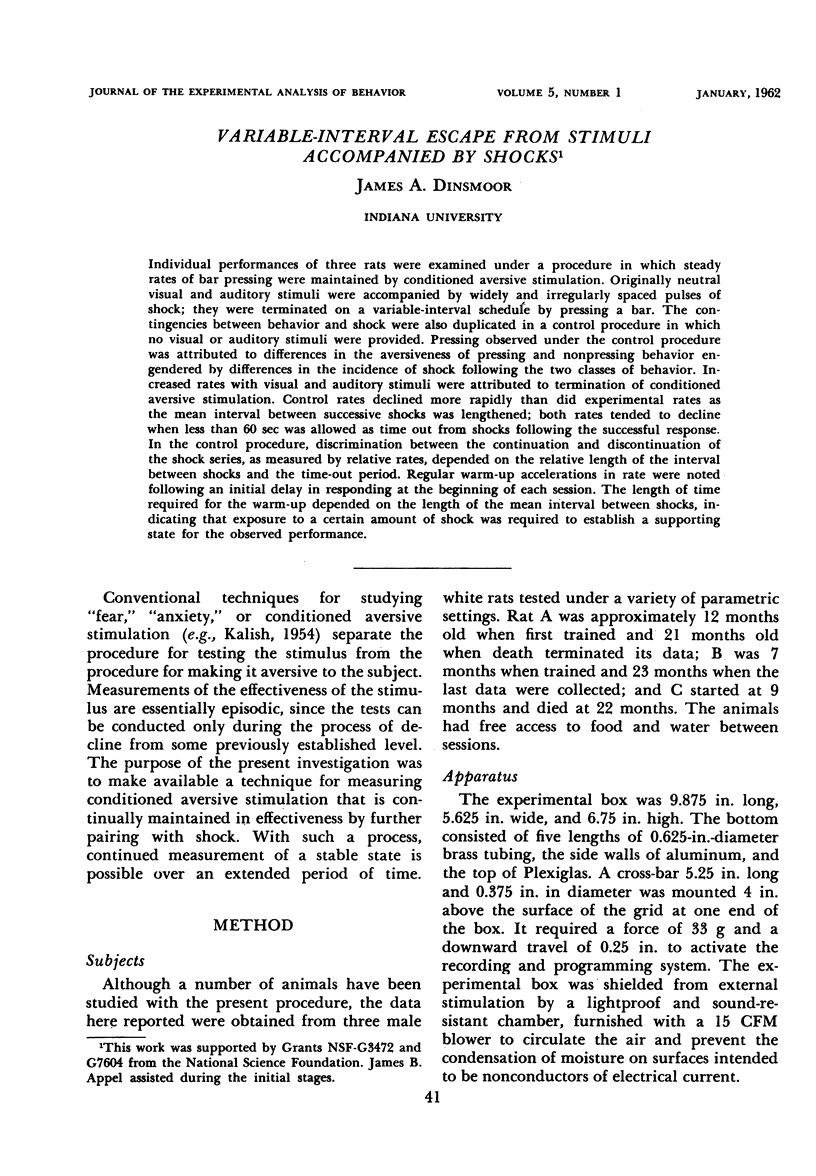
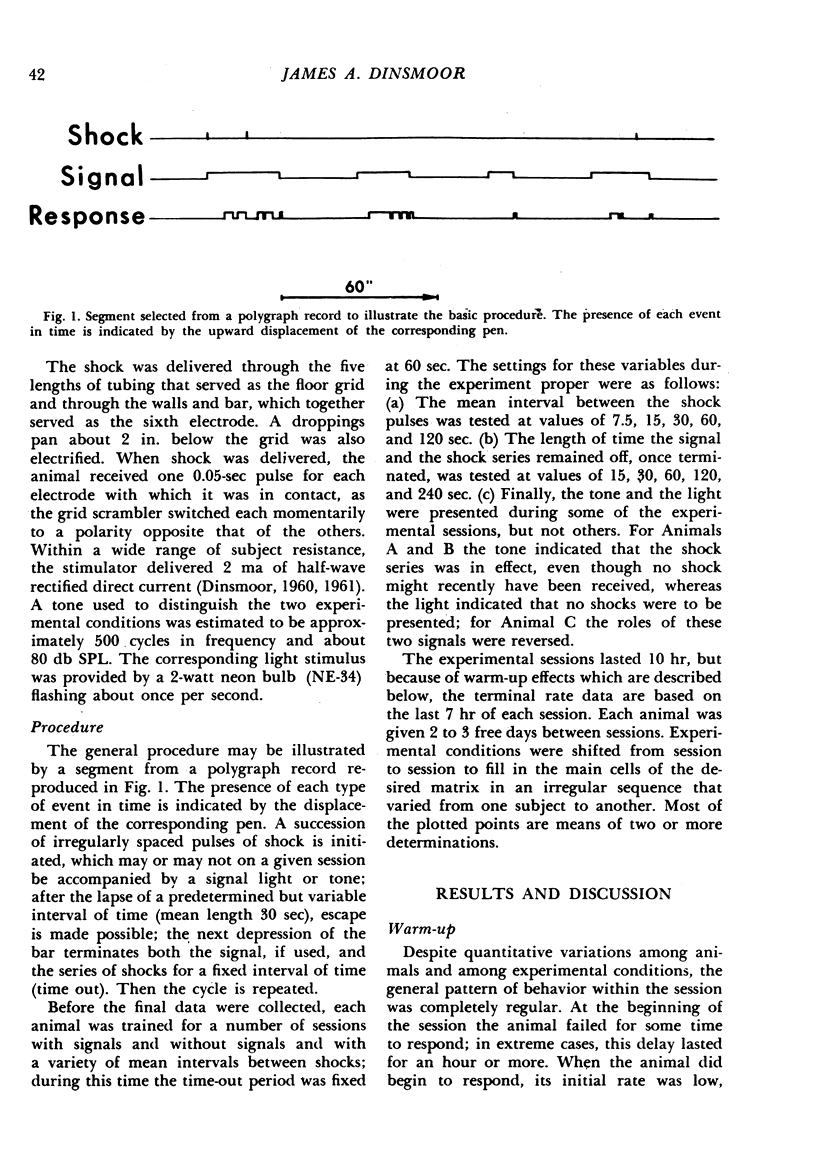
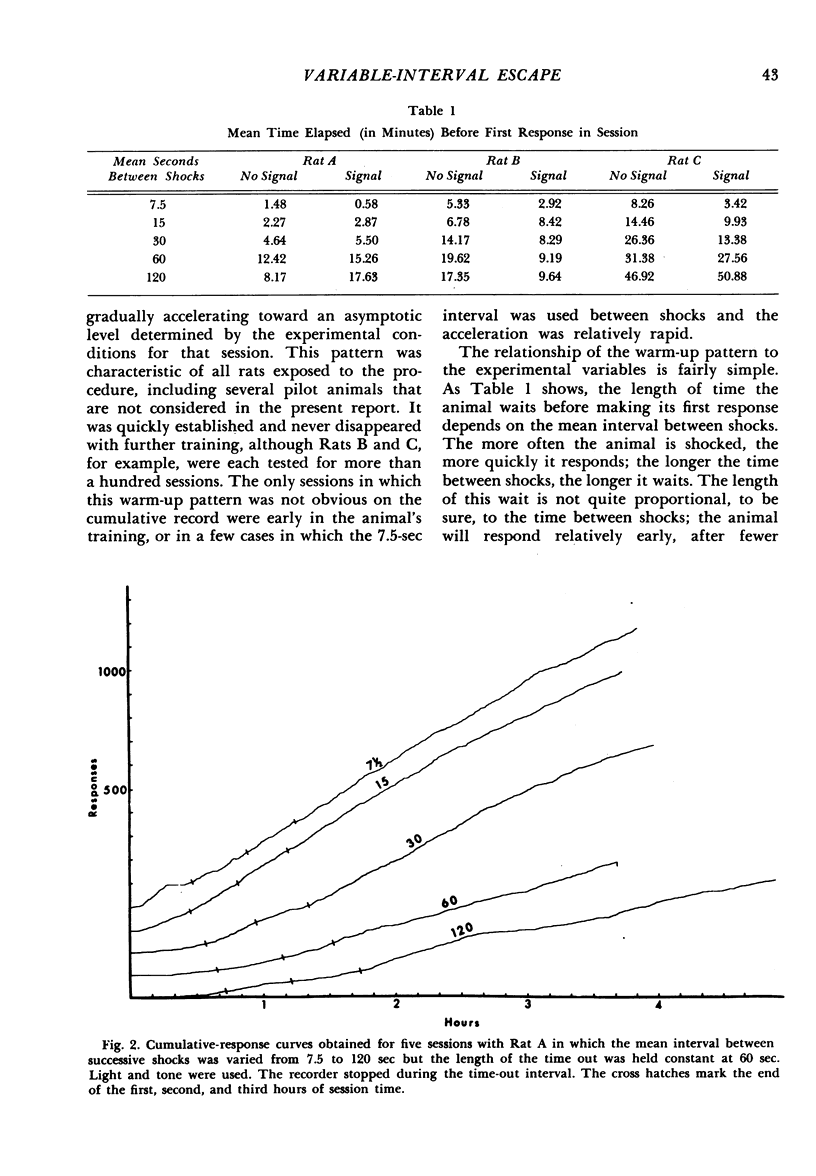
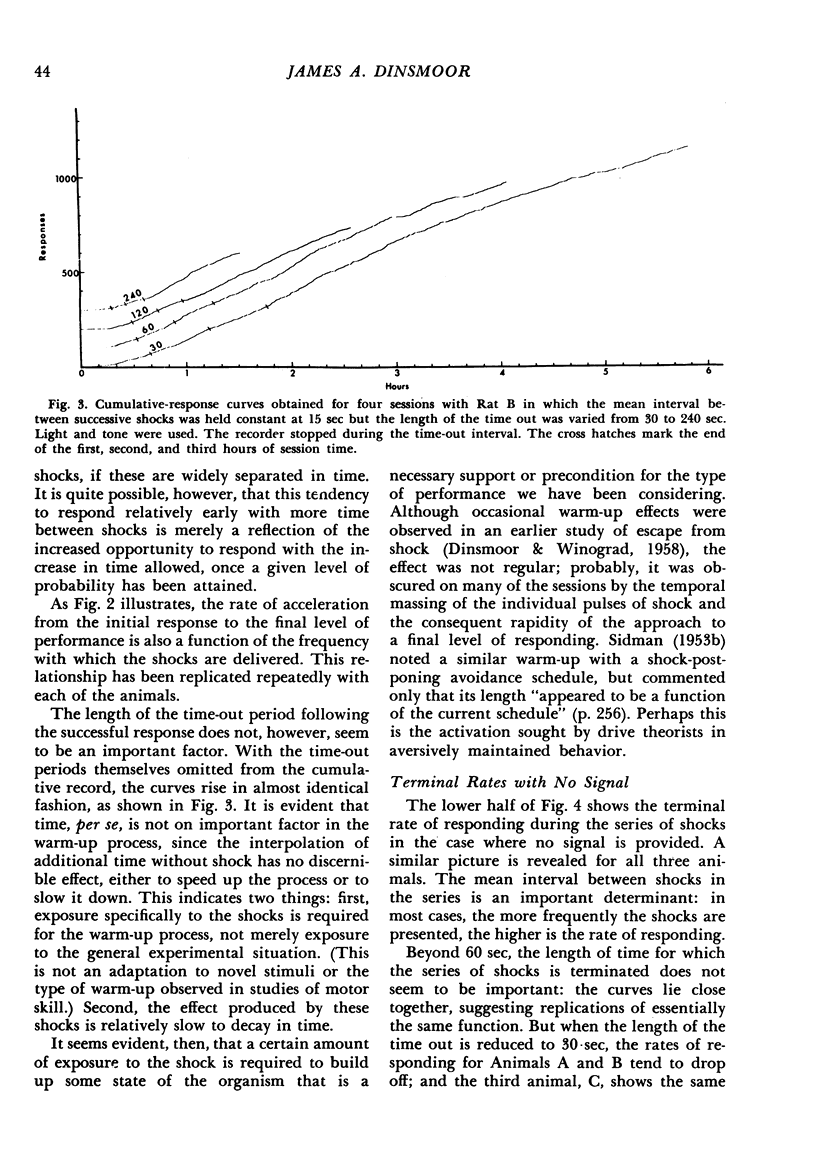
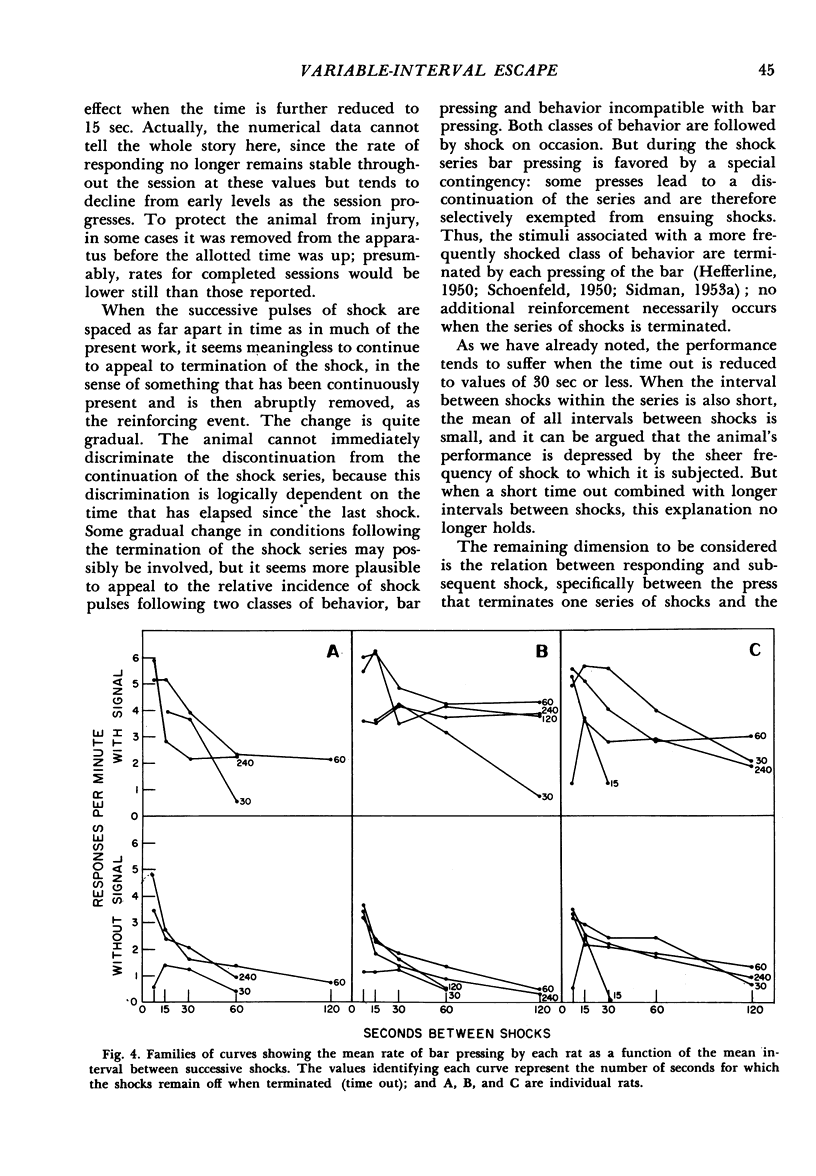
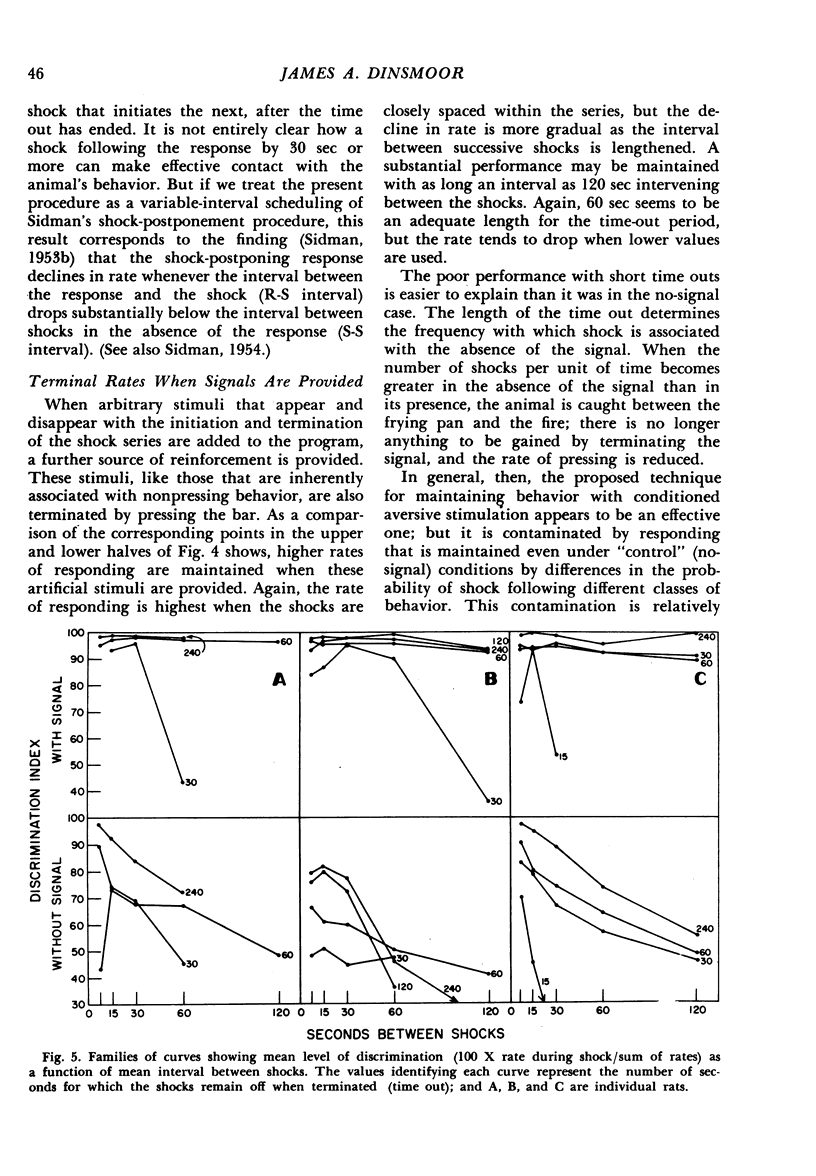
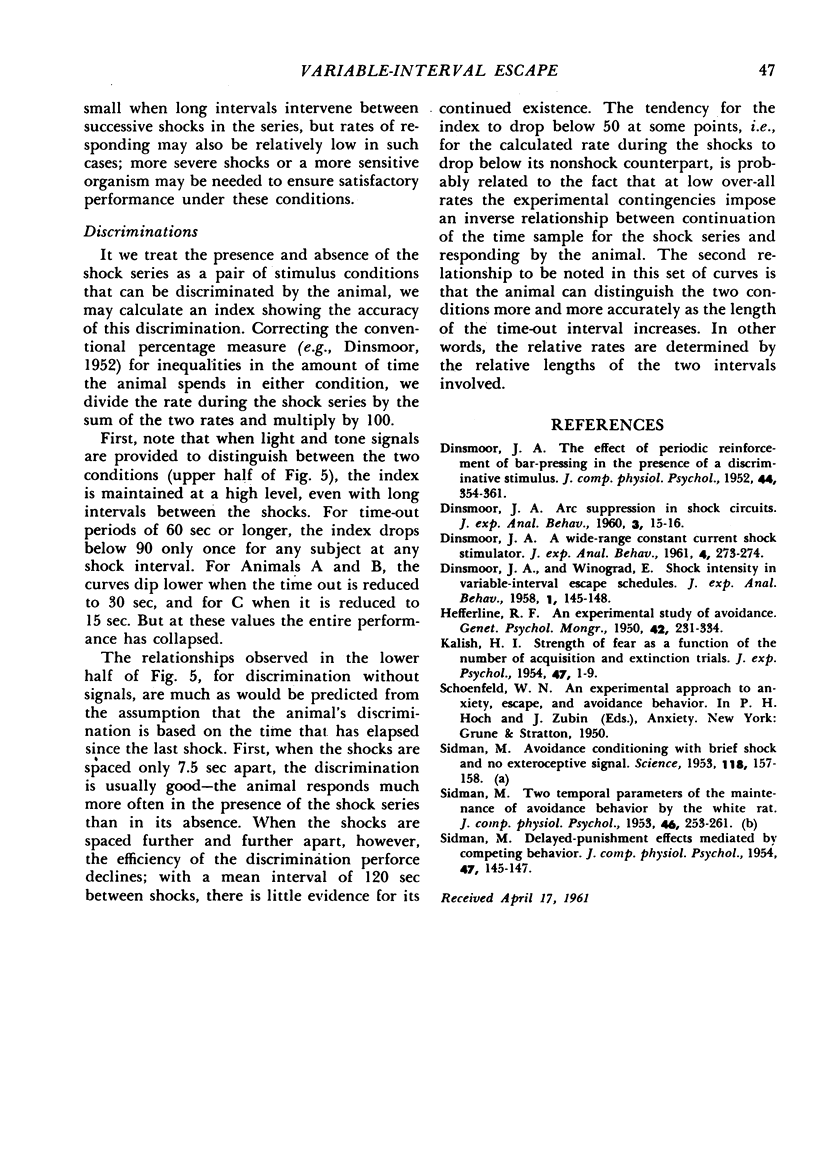
Selected References
These references are in PubMed. This may not be the complete list of references from this article.
- DINSMOOR J. A. A wide-range, constant-current shock stimulator. J Exp Anal Behav. 1961 Jul;4:273–274. doi: 10.1901/jeab.1961.4-273. [DOI] [PMC free article] [PubMed] [Google Scholar]
- DINSMOOR J. A. The effect of periodic reinforcement of bar-pressing in the presence of a discriminative stimulus. J Comp Physiol Psychol. 1951 Aug;44(4):354–361. doi: 10.1037/h0060006. [DOI] [PubMed] [Google Scholar]
- DINSMOOR J. Arc suppression in shock circuits. J Exp Anal Behav. 1960 Jan;3:15–16. doi: 10.1901/jeab.1960.3-15. [DOI] [PMC free article] [PubMed] [Google Scholar]
- Dinsmoor J. A., Winograd E. Shock Intensity in Variable-interval Escape Schedules. J Exp Anal Behav. 1958 Apr;1(2):145–148. doi: 10.1901/jeab.1958.1-145. [DOI] [PMC free article] [PubMed] [Google Scholar]
- HEFFERLINE R. F. An experimental study of avoidance. Genet Psychol Monogr. 1950 Nov;42(2):231–334. [PubMed] [Google Scholar]
- KALISH H. I. Strength of fear as a function of the number of acquisition and extinction trials. J Exp Psychol. 1954 Jan;47(1):1–9. doi: 10.1037/h0053732. [DOI] [PubMed] [Google Scholar]
- SIDMAN M. Avoidance conditioning with brief shock and no exteroceptive warning signal. Science. 1953 Aug 7;118(3058):157–158. doi: 10.1126/science.118.3058.157. [DOI] [PubMed] [Google Scholar]
- SIDMAN M. Delayed-punishment effects mediated by competing behavior. J Comp Physiol Psychol. 1954 Apr;47(2):145–147. doi: 10.1037/h0053970. [DOI] [PubMed] [Google Scholar]
- SIDMAN M. Two temporal parameters of the maintenance of avoidance behavior by the white rat. J Comp Physiol Psychol. 1953 Aug;46(4):253–261. doi: 10.1037/h0060730. [DOI] [PubMed] [Google Scholar]


